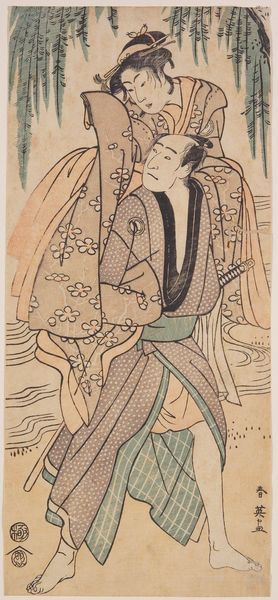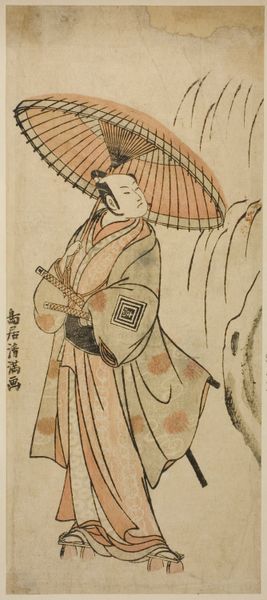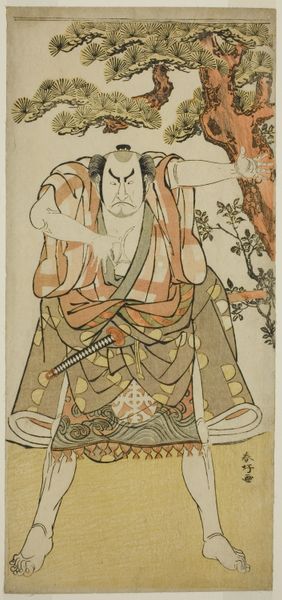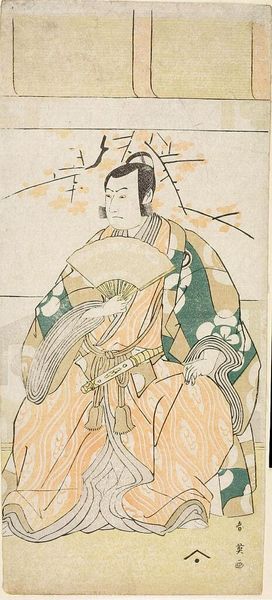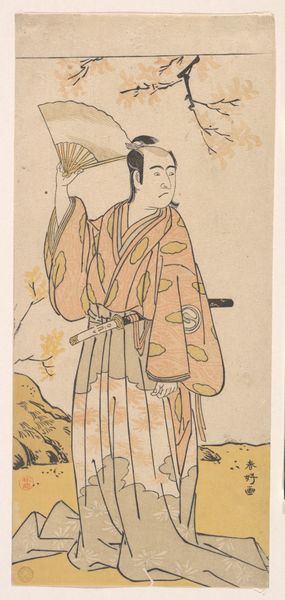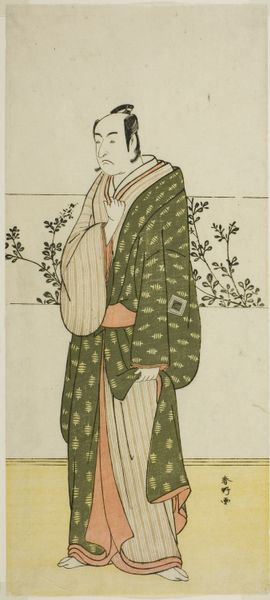
The Jewel River at Ide (Ide no Tamagawa), from the series "Six Jewel Rivers in Popular Customs (Fuzoku Mu Tamagawa)" c. 1769 - 1770
0:00
0:00
print, woodblock-print
# print
#
asian-art
#
landscape
#
ukiyo-e
#
woodblock-print
#
genre-painting
Dimensions: 26 3/4 × 4 5/8 in.
Copyright: Public Domain
Suzuki Harunobu made this woodblock print, "The Jewel River at Ide," sometime in the mid-18th century. It’s part of a series referencing famous rivers and exploring popular customs. Harunobu was working at a time when printmaking in Japan was increasingly commercial and geared toward a growing urban audience. Here, we see fashionable women, their identities signaled by their elaborate hairstyles and clothing. The setting, Ide, was known for its scenic beauty, but it’s also a place of social interaction. The print includes calligraphy and a smaller image, further layering its cultural references. Harunobu’s work reflects a society that's becoming more focused on leisure and entertainment. His prints weren't just art objects; they were part of a visual culture that helped to shape social norms and aspirations. To fully understand this print, we need to delve into the social and economic history of Edo-period Japan, looking at everything from fashion trends to the development of the print market. It’s through this kind of research that we can truly appreciate the complex meanings embedded in Harunobu's art.
Comments
No comments
Be the first to comment and join the conversation on the ultimate creative platform.



